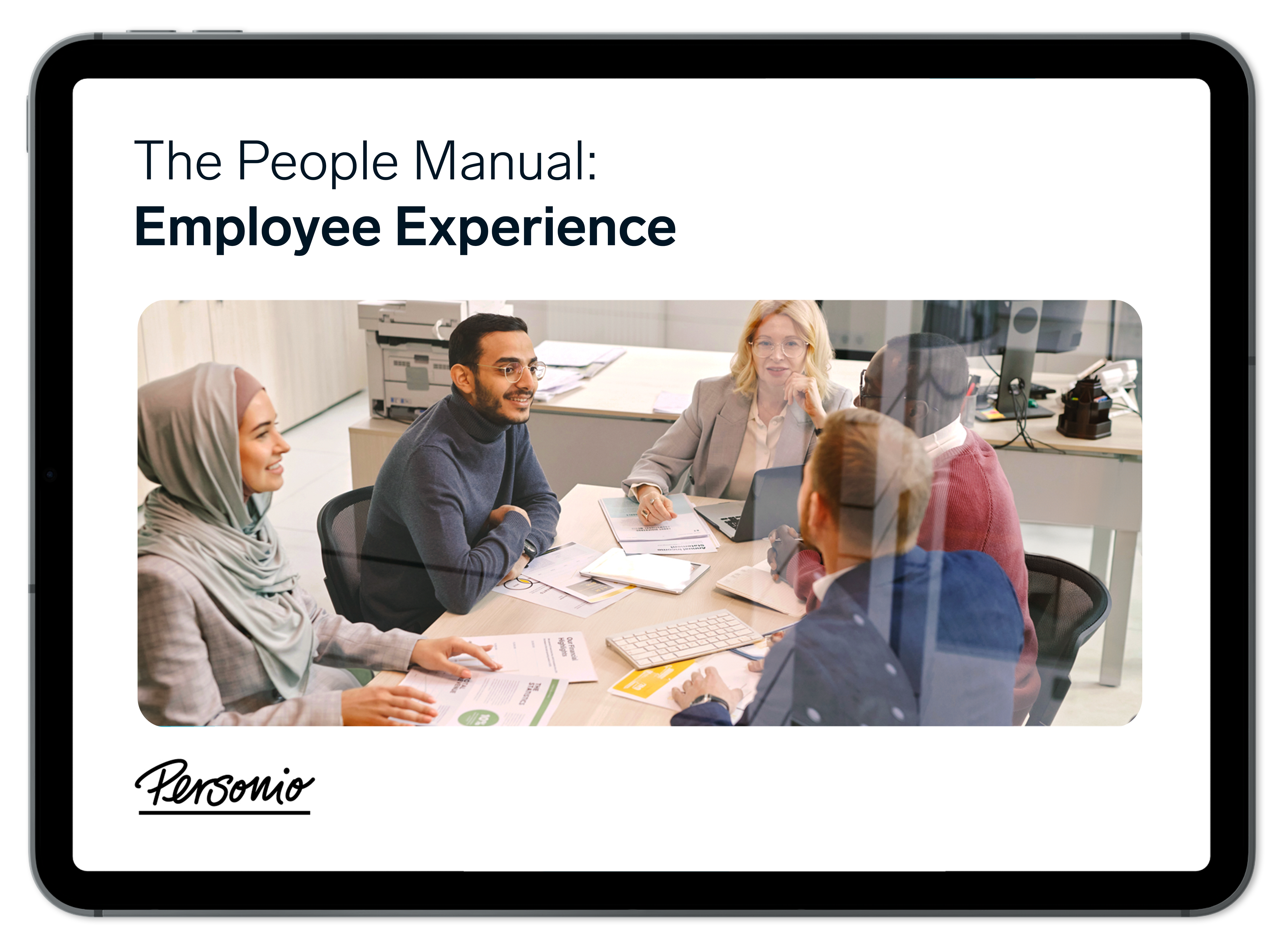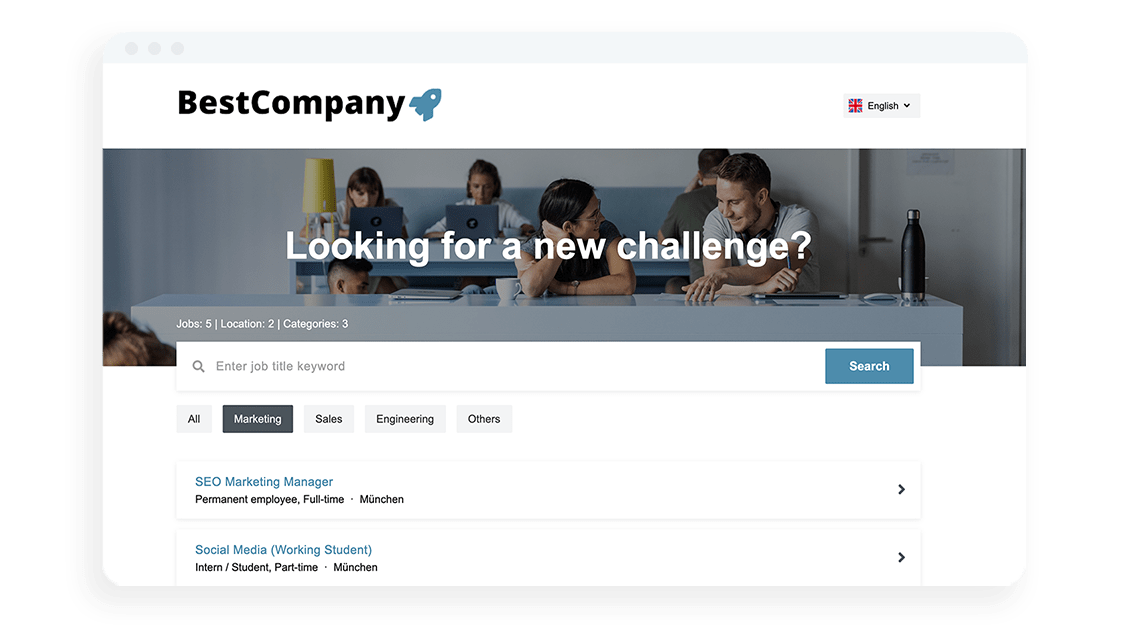Does Your Company Need An Employee Referral Programme?

Deutsche Bahn does it; Siemens, Targobank and other small or medium-sized companies also do it: They let their employees recruit new hires. Because talent is rare and difficult to retain. An employee referral scheme can deliver on both finding and keeping new employees. And it is much cheaper than a headhunter. Find out here what makes this kind of programme successful.
An employee referral programme is just one element of an efficient recruitment strategy. Personio software offers you additional support with your online presence and enables you to make a professional impression as an employer.
Employee Referral Programme: Good Employees Know Good Employees…
According to a XING survey of 152 HR decision-makers, 77 percent of all companies attach great importance to having their employees actively look for new hires. Because, as a rule, good workers tend to know other people who are willing and able to do a good job. Employees are also more persuasive than headhunters – they are more believable because they know exactly what they are talking about – and what they are promising.
And their friends know that they would not recommend a bad position to them. The result is that employee acquisition is much quicker than using a standard application process. Because the applicants have already received a detailed briefing beforehand and know all about the job and the company.
Those Who Quickly Find Their Feet Can Start Adding Value Sooner
If you already know some of your colleagues before starting a new job, you can start off on a good footing from day one. When not everything is completely new, it is easier to get into the swing of things. Familiarity between employees leads to a positive working atmosphere – and ideally to good work. And when employees identify strongly with the company, they will stay with their employer longer and be less likely to start looking for another position.
Half a decade of insights on employee experience

Our "People Manual" covers all things related to employee experience and developing initiatives that result in more engaged employees. Grab your free copy right now.
Download It TodayFour Questions About the Employee Referral Programme
When looking for new colleagues, companies and HR departments should not rely exclusively on headhunters and job ads. Employee referral schemes are an effective way to attract new talent and retain it over the long term. According to studies carried out by the Institute for Employment Research (IAB), 40 percent of companies already use their own workforce networks – with success, as Deutsche Bahn and Siemens show. Before you start doing so, you should ask yourself four key questions:
Question 1: When Does It Make Sense to Use an Employee Referral Programme?
This is a way of life for startups: They find their new hires among their friends or straight out of college. The new hires then recommend former fellow students or acquaintances from their student days. In many cases, this works very well.
The examples of Deutsche Bahn and Siemens prove that an employee recruitment programme can work just as well for large corporations as it does for startups. Both successfully use a referral programme to source employees. Deutsche Bahn finds more than 1,000 new hires per year like this. DB employs 7,000–8,000 new employees each year, which means that the Deutsche Bahn employee referral programme is responsible for an average of 10 percent of employee acquisition. The "Employees Recruit Employees” bonus pays €500 for successfully recruited trainees and at least €1,500 for qualified employees.
There are only a few positions for which this type of employee acquisition is not suitable. This is why employee referrals are especially useful when it comes to niche jobs. The referring employee knows which specific skills their friend or acquaintance has and so can recommend exactly the right person.
Helpful hint
Before starting this kind of program, consider carefully which positions are suitable for employee referrals and where you would prefer to use a headhunter.
Question 2: How Should I Organise My Employee Referral Scheme Policy?
For this kind of referral programme to work, your company needs to have the right setup. For example, both job openings and recommendations should be organised via an online platform – you should avoid bringing in the additional complication of employee referral forms. This is the only way that employees can keep themselves informed about vacancies and easily (with just a couple of mouse clicks) share them with their acquaintances.
Targeting individual employees can also make sense – for example, when certain employees are particularly committed and good at their job. You could ask them at regular intervals whether they can recommend any of their acquaintances.
The first important step is making sure that your employees know about vacant positions. Draw attention to them via your intranet, notices in the office or by email. Also, make sure all your colleagues are familiar with the details of your employee referral scheme policy. What is an employee referral? How are employees rewarded? Where can you suggest someone as a potential new colleague?
Helpful hint
Communicate to your workforce that this program exists – it does not really matter how; this could be done via the intranet or team leaders. What is important is that every employee is aware that this initiative exists, how it works and how they can benefit from it.
Question 3: What Kind of Employee Referral Bonus Should I Use?
It takes a certain amount of effort for an employee to recruit acquaintances or friends. You should not only recognise this verbally, but also reward it with a bonus, for example in the form of a financial incentive. This of course begs the question: “How much?”
Should the employee be proportionately remunerated, e.g. with a certain percentage of the monthly or annual salary?
Should there be a fixed rate for everyone?
When should the employee get the money – when the candidate is hired, when they apply or after their trial period has been completed?
Each company has to decide this for themselves. One thing you want to avoid is employees indiscriminately asking around among the people they know just to receive an employee referral bonus. Compensation in the form of additional vacation days, an extra vacation payment, free professional development, vouchers or donations can also be a good incentive.
Helpful hint
Offer tangible, for example monetary, incentives. Think about whether a fixed amount or a proportional one (based on the new hire’s salary) makes more sense, and when the reward should be paid out.
Question 4: How Do I Monitor the Employee Referral Programme?
You should also establish key performance indicators (KPIs) for your employee referral programme. These are metrics that provide information on whether and to what extent your initiative has been successful. What could provide a meaningful measure of the success of the programme? One option would be the hiring rate based on employee referrals; another indicator could be employee turnover – including timing. You will need to define your own KPIs. However, you can always adjust them if, for example, you find that they are too ambitious.
Helpful hint
Make sure the indicators relate to your goals. Do you find it difficult to retain employees over the long term? If so, the aim of your employee referral program could be to find employees who remain at the company for a long time.
Is This Something I Really Need?
Those who try and get along without using employee referrals in recruitment are likely to lose the battle for quality workers to their competitors – and waste valuable resources: for example both headhunter costs and the potential of their own employees.
